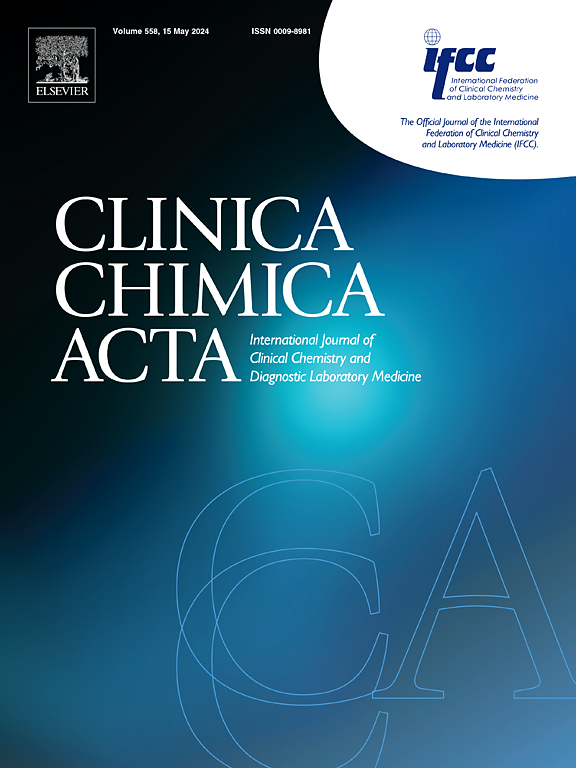HDAC3 in neurodevelopmental disorders: Molecular mechanisms and targeted intervention
IF 2.9
3区 医学
Q2 MEDICAL LABORATORY TECHNOLOGY
引用次数: 0
Abstract
Autosomal dominant neurodevelopmental disorders are increasingly linked to genetic mutations that interfere with brain development and function. Among the genes implicated, HDAC3 plays a central role as an epigenetic regulator, maintaining chromatin structure and controlling gene expression. Mutations in HDAC3 have been associated with developmental delays, intellectual disabilities, and autism spectrum disorder. This narrative review explores recent genetic, molecular, and clinical research on HDAC3 and its involvement in autosomal dominant neurodevelopmental disorders. A comprehensive and detailed literature search was done, mainly focusing on studies that examine the gene’s molecular functions, pathogenic variants, and clinical outcomes. Beyond its role in gene silencing and chromatin remodeling, HDAC3 is also critical for neural differentiation and synaptic plasticity. HDAC3 interacts with nuclear receptor co-repressors such as NCoR and SMRT, which are important for transcriptional repression during brain development. Recent studies have demonstrated that HDAC3 dysfunction can lead to abnormalities in cortical layering and neuron subtype specification. Moreover, HDAC3 is involved in regulating oxidative stress and neuroinflammation, processes that are critical for sustaining neural health. Experimental HDAC3 inhibitors are being explored as potential therapeutic agents to reverse epigenetic abnormalities and improve neurological outcomes in model systems. The review discusses emerging therapeutic strategies, including pharmacological targeting and gene-editing approaches. Continued research is essential to better understand HDAC3 mutations, expand genetic screening, and develop targeted treatments for individuals affected by these rare but impactful disorders.
HDAC3在神经发育障碍中的分子机制和靶向干预
常染色体显性神经发育障碍越来越多地与干扰大脑发育和功能的基因突变有关。在相关基因中,HDAC3作为表观遗传调控因子发挥核心作用,维持染色质结构并控制基因表达。HDAC3基因突变与发育迟缓、智力障碍和自闭症谱系障碍有关。本文综述了HDAC3基因、分子和临床研究及其在常染色体显性神经发育障碍中的作用。我们进行了全面而详细的文献检索,主要集中在研究该基因的分子功能、致病变异和临床结果。除了在基因沉默和染色质重塑中发挥作用外,HDAC3对神经分化和突触可塑性也至关重要。HDAC3与核受体共抑制因子(如NCoR和SMRT)相互作用,它们对大脑发育过程中的转录抑制很重要。最近的研究表明,HDAC3功能障碍可导致皮层分层和神经元亚型规范异常。此外,HDAC3还参与调节氧化应激和神经炎症,这些过程对维持神经健康至关重要。实验性HDAC3抑制剂正在被探索作为潜在的治疗药物来逆转表观遗传异常和改善模型系统的神经预后。这篇综述讨论了新兴的治疗策略,包括药物靶向和基因编辑方法。持续的研究对于更好地了解HDAC3突变、扩大基因筛查和开发针对受这些罕见但影响严重的疾病影响的个体的靶向治疗至关重要。
本文章由计算机程序翻译,如有差异,请以英文原文为准。
求助全文
约1分钟内获得全文
求助全文
来源期刊

Clinica Chimica Acta
医学-医学实验技术
CiteScore
10.10
自引率
2.00%
发文量
1268
审稿时长
23 days
期刊介绍:
The Official Journal of the International Federation of Clinical Chemistry and Laboratory Medicine (IFCC)
Clinica Chimica Acta is a high-quality journal which publishes original Research Communications in the field of clinical chemistry and laboratory medicine, defined as the diagnostic application of chemistry, biochemistry, immunochemistry, biochemical aspects of hematology, toxicology, and molecular biology to the study of human disease in body fluids and cells.
The objective of the journal is to publish novel information leading to a better understanding of biological mechanisms of human diseases, their prevention, diagnosis, and patient management. Reports of an applied clinical character are also welcome. Papers concerned with normal metabolic processes or with constituents of normal cells or body fluids, such as reports of experimental or clinical studies in animals, are only considered when they are clearly and directly relevant to human disease. Evaluation of commercial products have a low priority for publication, unless they are novel or represent a technological breakthrough. Studies dealing with effects of drugs and natural products and studies dealing with the redox status in various diseases are not within the journal''s scope. Development and evaluation of novel analytical methodologies where applicable to diagnostic clinical chemistry and laboratory medicine, including point-of-care testing, and topics on laboratory management and informatics will also be considered. Studies focused on emerging diagnostic technologies and (big) data analysis procedures including digitalization, mobile Health, and artificial Intelligence applied to Laboratory Medicine are also of interest.
 求助内容:
求助内容: 应助结果提醒方式:
应助结果提醒方式:


